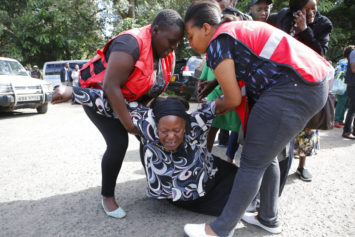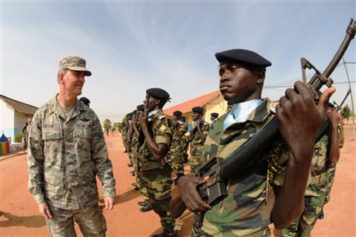“History is not everything” John Henrik Clarke once wrote, “but it is the starting point. History is a clock that people use to tell their time of day. It is a compass they use to find themselves on the map of human geography. It tells them where they are, but more importantly, what they must be.”
Woe upon those who choose to forget their past. Much media attention is paid to the havoc and destruction inflicted by Islamic terrorist groups—such as al-Qaeda and ISIS—in the Mideast, and terror attacks in the West. Yet, there is little focus on what these militant groups are doing to erase African history through the destruction of ancient African manuscripts.
When al-Qaeda militants took control of Timbuktu in 2013, they issued edicts to control behavior and dress, and destroyed Sufi shrines, with books not far behind. As the Guardian reported back in 2013, Islamist insurgents set fire to two buildings of a library in Timbuktu that had housed thousands of precious, historic manuscripts, as the militants were retreating before the arrival of French and Malian troops. But as The Economist noted, given the torching of libraries by Islamic militants in Libya earlier that year, efforts had already been afoot to save most of these manuscripts.
Described as “the Sahara’s capital of manuscript study,” Timbuktu was a flourishing center of learning, where books were produced and exchanged on a wealth of scholarship in religion, math, the arts and the sciences. The city, which witnessed rapid growth in the 13th and 14th centuries due to trade, and had a golden age in the 15th and 16th centuries, was one of the greatest centers for commerce and scholarship in the world. In addition, the University of Sankoré, or the Sankoré mosque, was a leading center of Islamic learning, and one of the first universities in the world, rivaling Oxford, Cambridge and the Sorbonne. The university had 25,000 students and teachers, in a grand city that thrived at a time when Europe was suffering from the Plague.
Today, more than 370,000 manuscripts are stored in safe houses—95 percent of the total once held in Timbuktu–after they were evacuated in a $1 million effort funded by the Dutch lottery, the German government and private donors.
“The vast majority of the Mali manuscripts are Korans, Hadiths, and studies on grammar and rhetoric. But the scanners capture everything, including those dealing with human rights, health and law,” reads The Economist report. “Paper was precious, so rare glimpses of daily life were jotted in the margins, before Europeans ever set eyes on Saharan cities. There they remained for centuries, preserved by the desert’s dryness.”
But even before the terrorists came, there were efforts to preserve the ancient African and Arabic language manuscripts, which were as old as millennium and under threat due to the harsh desert climate, neglect and a lack of resources in the fifth poorest nation in the world.
“The manuscripts are our heritage,” Abdel Kader Haidara, the curator of the Mamma Haidara Manuscript Library, Timbuktu’s largest private library, told the Christian Science Monitor in 2008. “They have been passed from generation to generation. They are the history of Africa, the history of mankind.”
According to the Christian Science Monitor, South Africa intervened with $8 million for a new library and research center, with support from the Pan-African New Partnership for Africa’s Development, or NEPAD. And now, Benedictine monks from Minnesota have accepted a request to digitize Timbuktu’s vast collections. After two years, two of Timbuktu’s 25 libraries have been backed up at a cost of $285,000, with support from the British-based Arcadia Fund.
Meanwhile, here we have African men taking part in the destruction of world history—their history—through a perversion of religion, in this case a hijacking of Islam. This moment in time provides an opportunity to examine the history of Islam regarding African people.
“Religion is the organization of spirituality into something that became the hand maiden of conquerors,” Dr. Clarke wrote. “Nearly all religions were brought to people and imposed on people by conquerors, and used as the framework to control their minds.”
As a point of historical reference, it is worth noting that the Arab enslavement of Black people came first, predating the European version by 700 years and lasting for fourteen centuries. Moreover, the Arab slave trade, which was not limited to Africans, was just as bad, if not worse, than the Transatlantic slave trade.
In fact, at least 10 to 20 million people were enslaved by Arab slave traders, possibly more, with some estimates that more than 20 million crossed the Sahara to the Arab world, and over 80 million died en route. The Arab slave trade encouraged racism against Africans, as the Arabic word for slave—Abid—became a colloquial term for African. In addition, Arab enslavers targeted African women for rape and waged genetic warfare through the castration of male enslaved Africans between the age of 8 and 12. Further, some historians maintain that Arabs avoided teaching Islam to Blacks in order to justify their enslavement, as Islam prohibited freeborn Muslims from being slaves.
“The role of religions in the domination and destruction of African civilizations was ruthless… Islam was as guilty as all the rest,” Dr. Clarke said.



